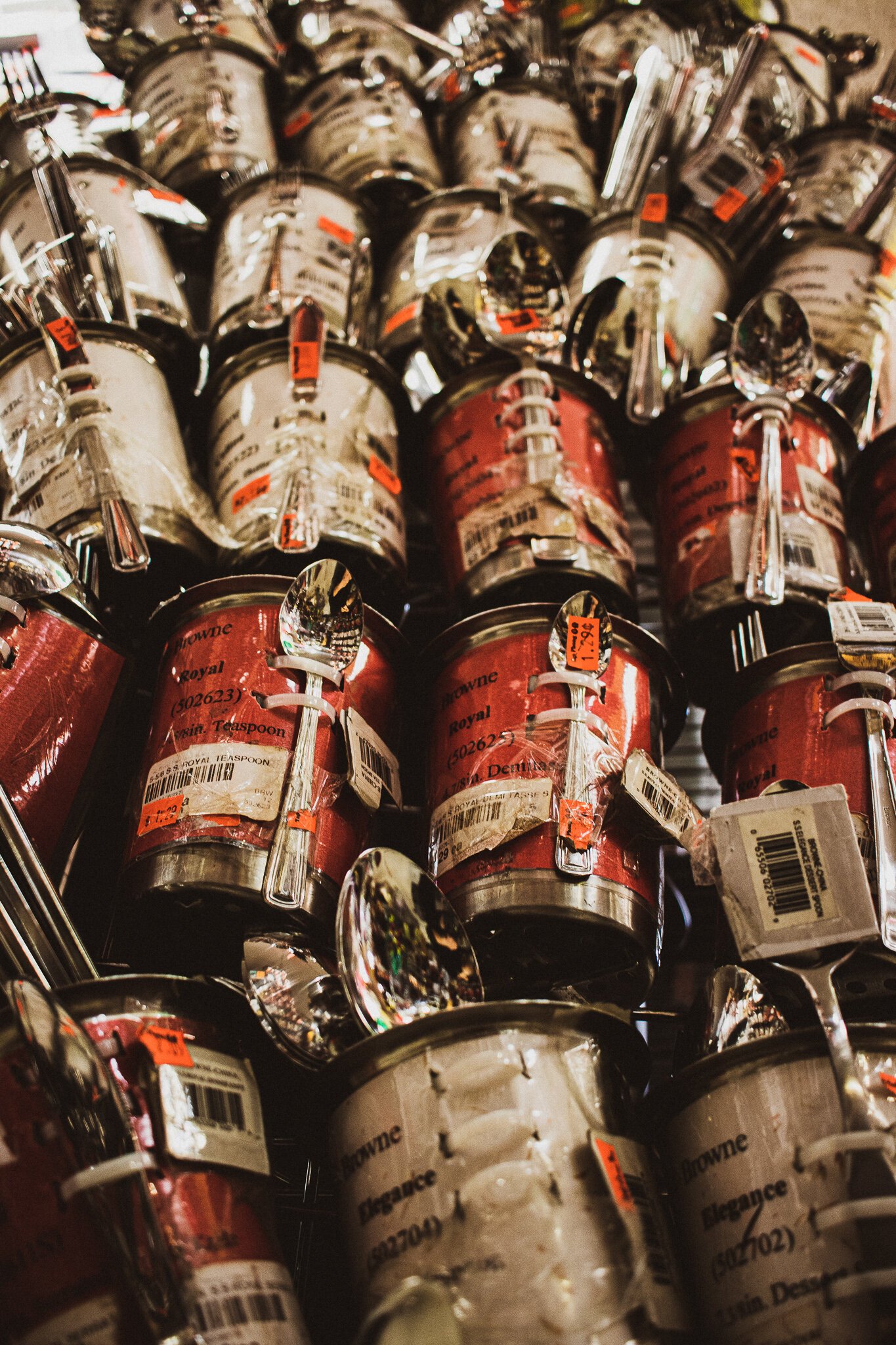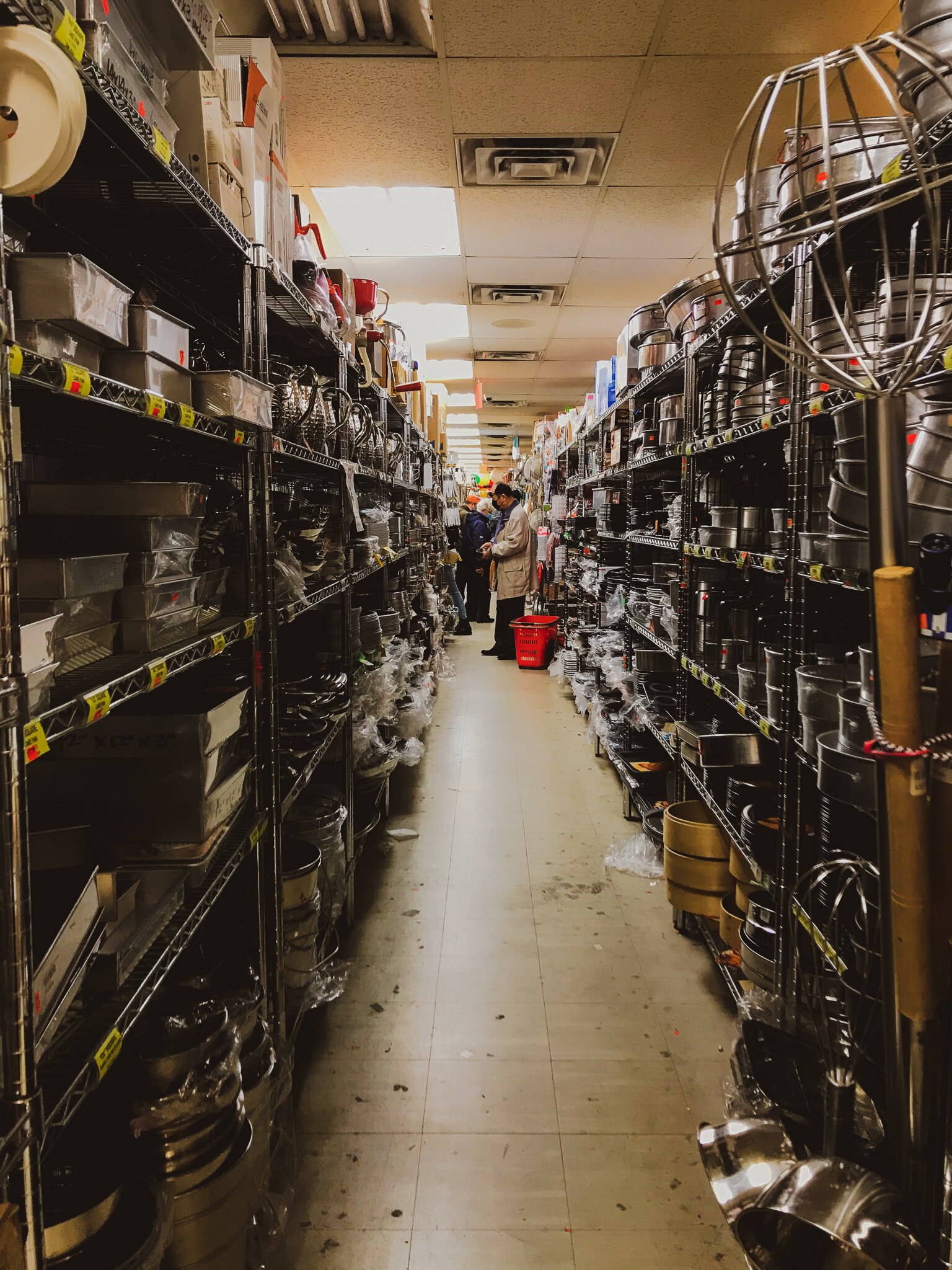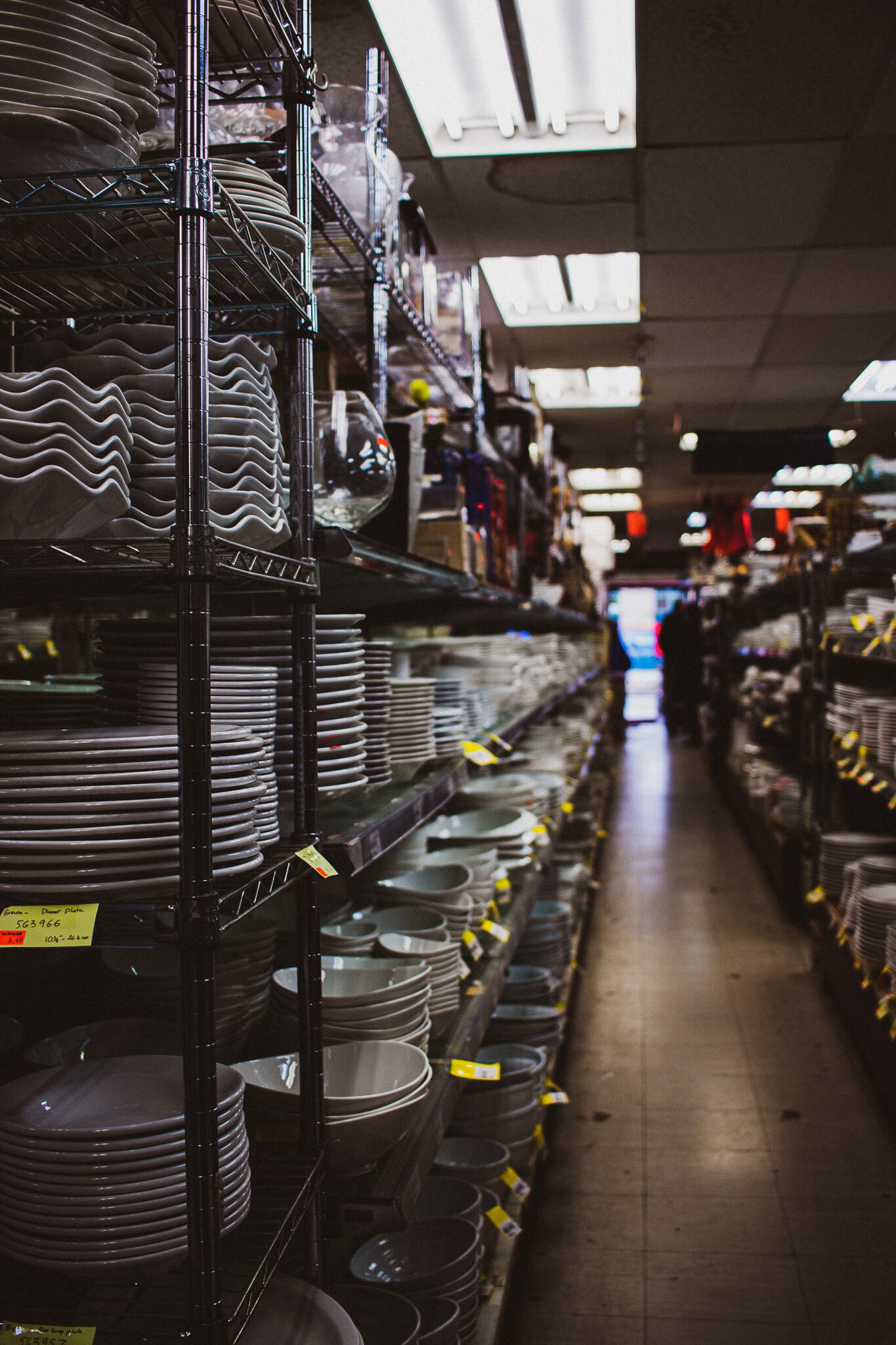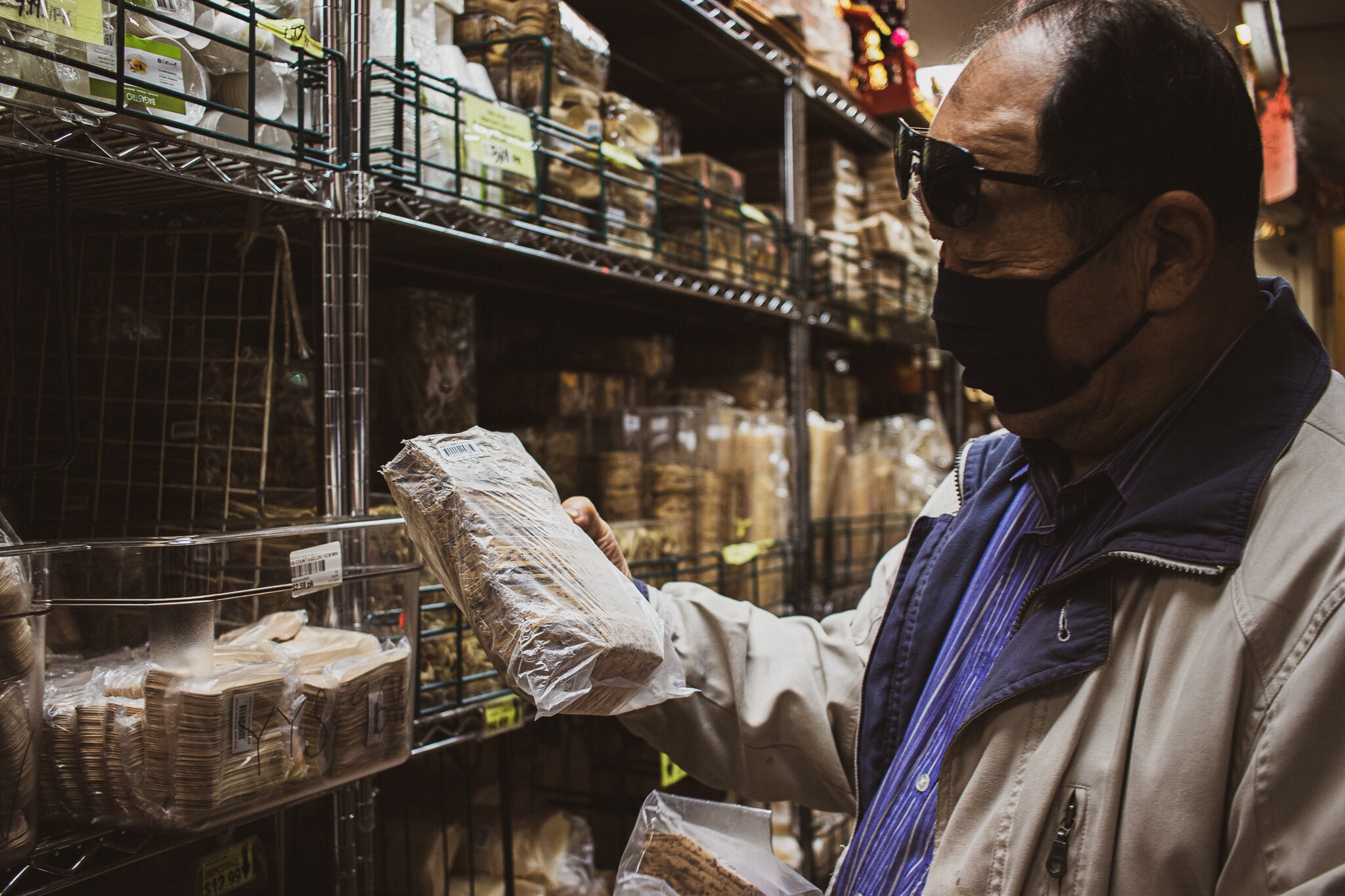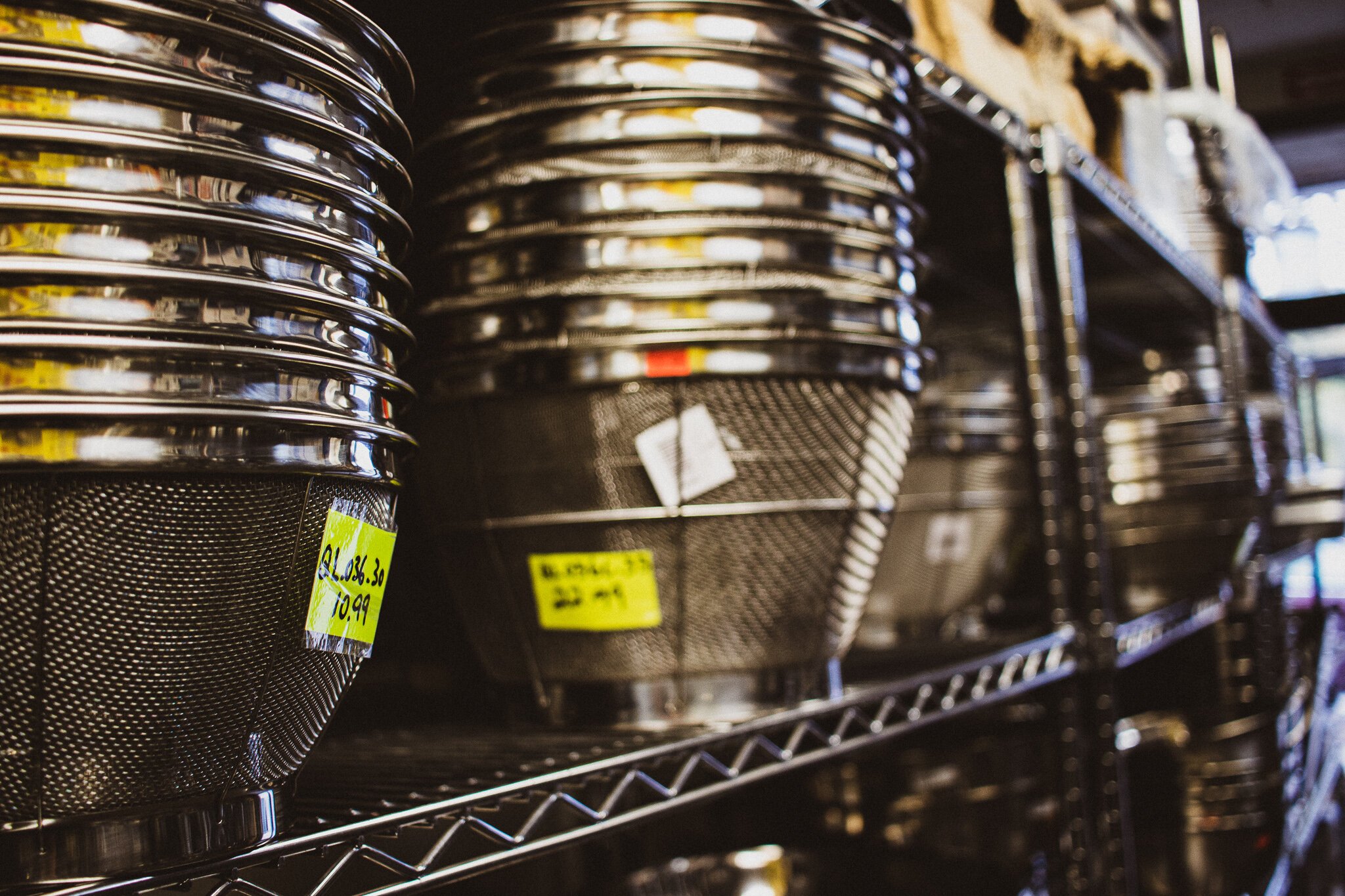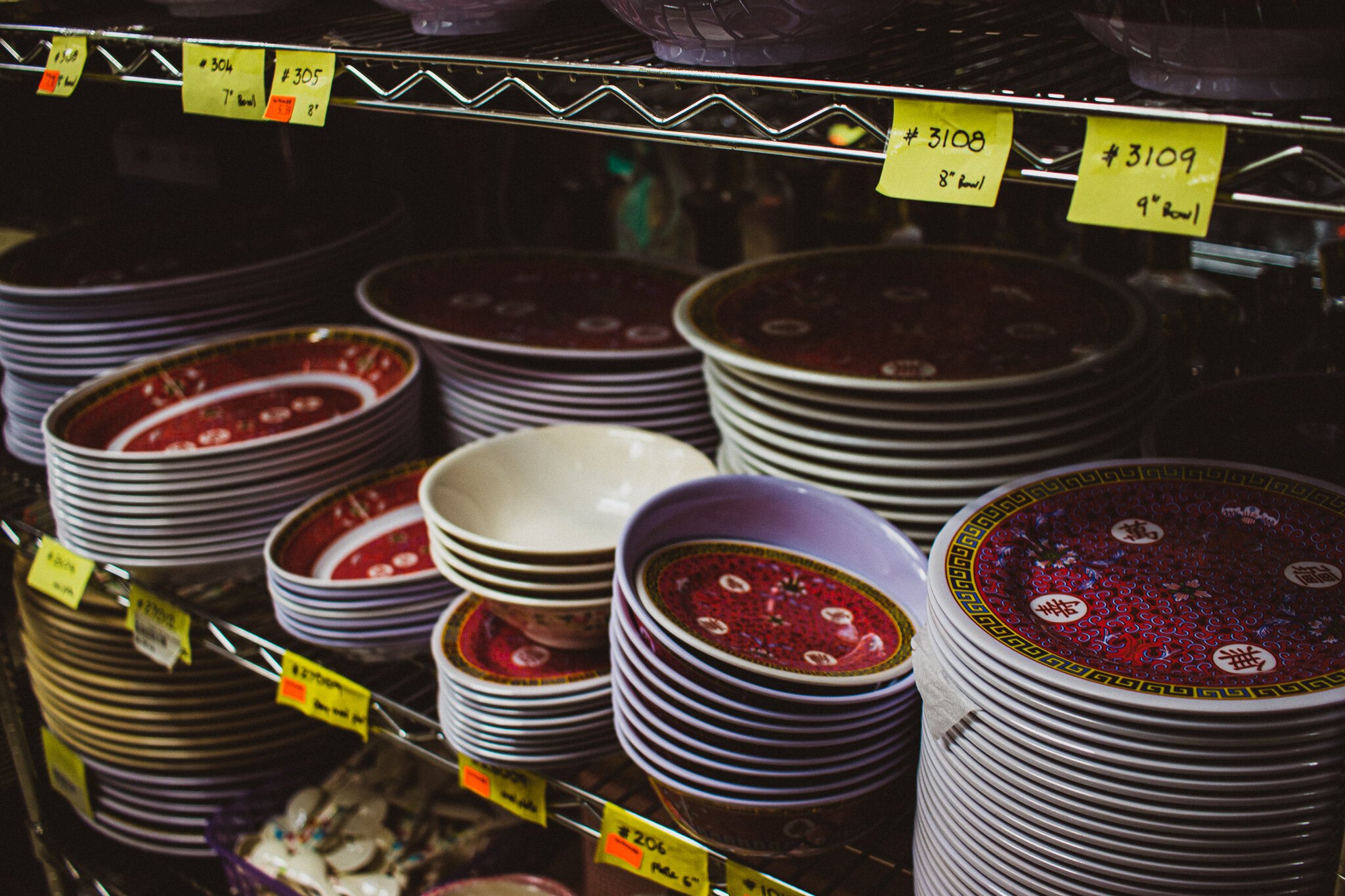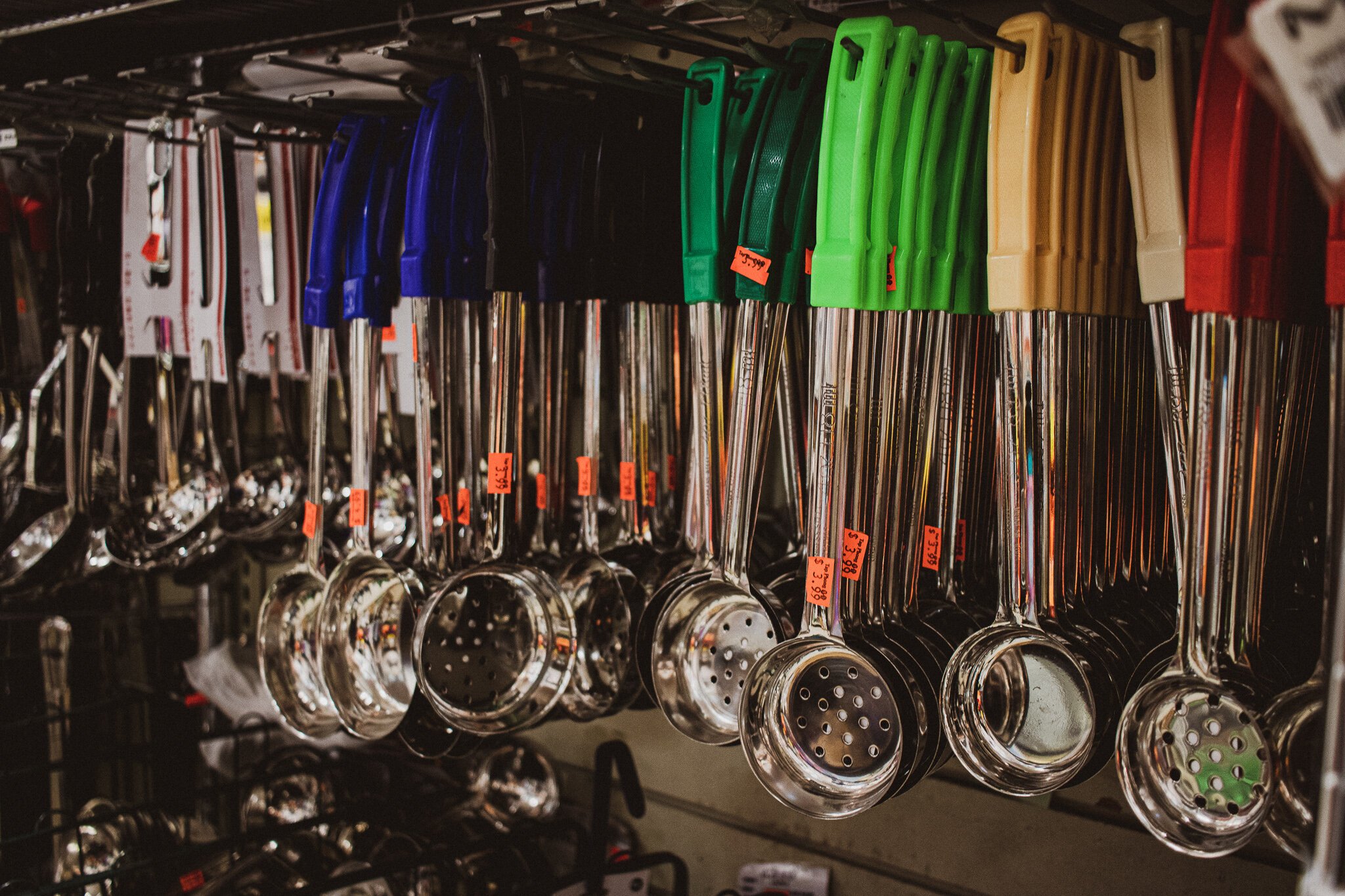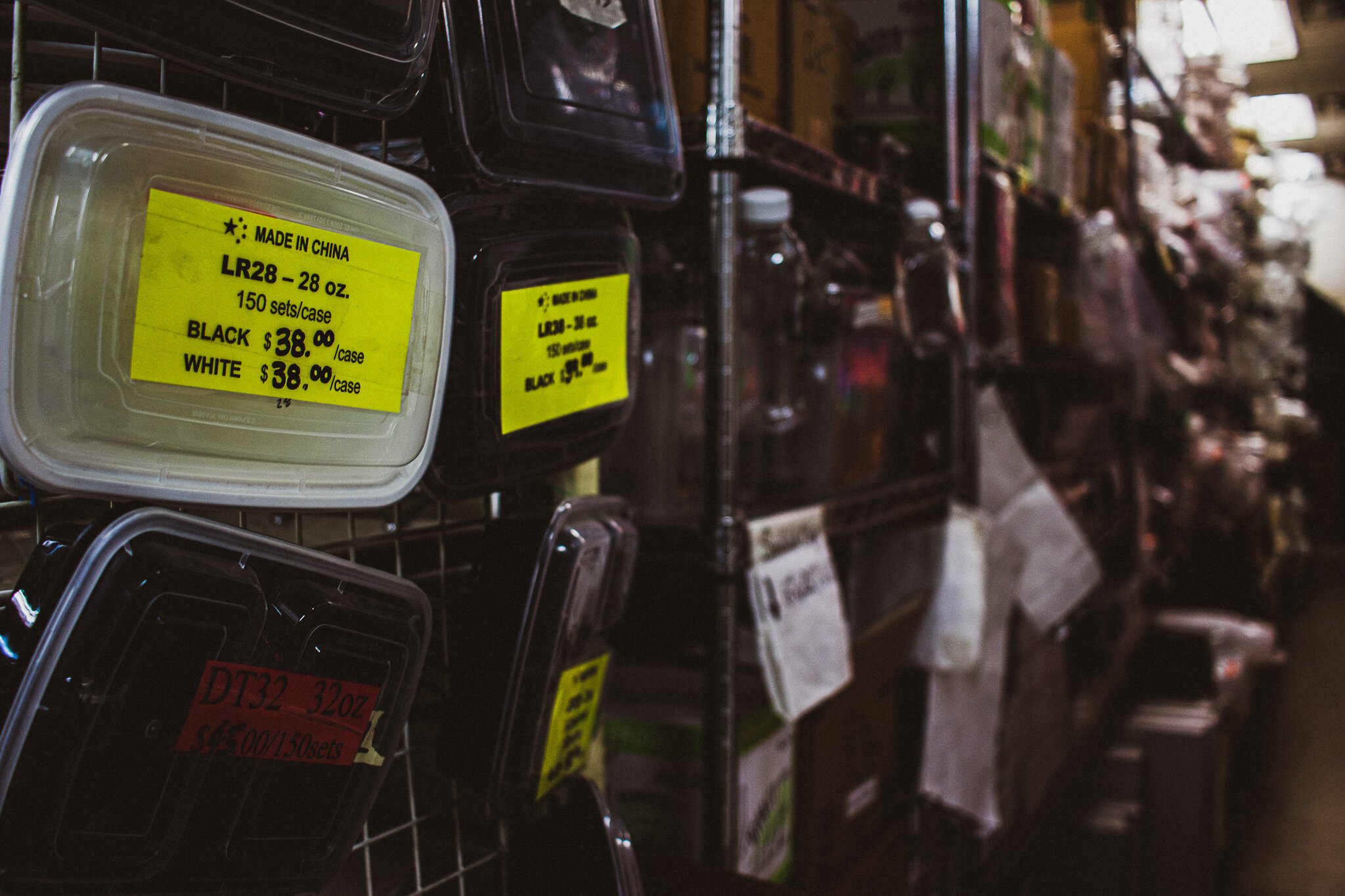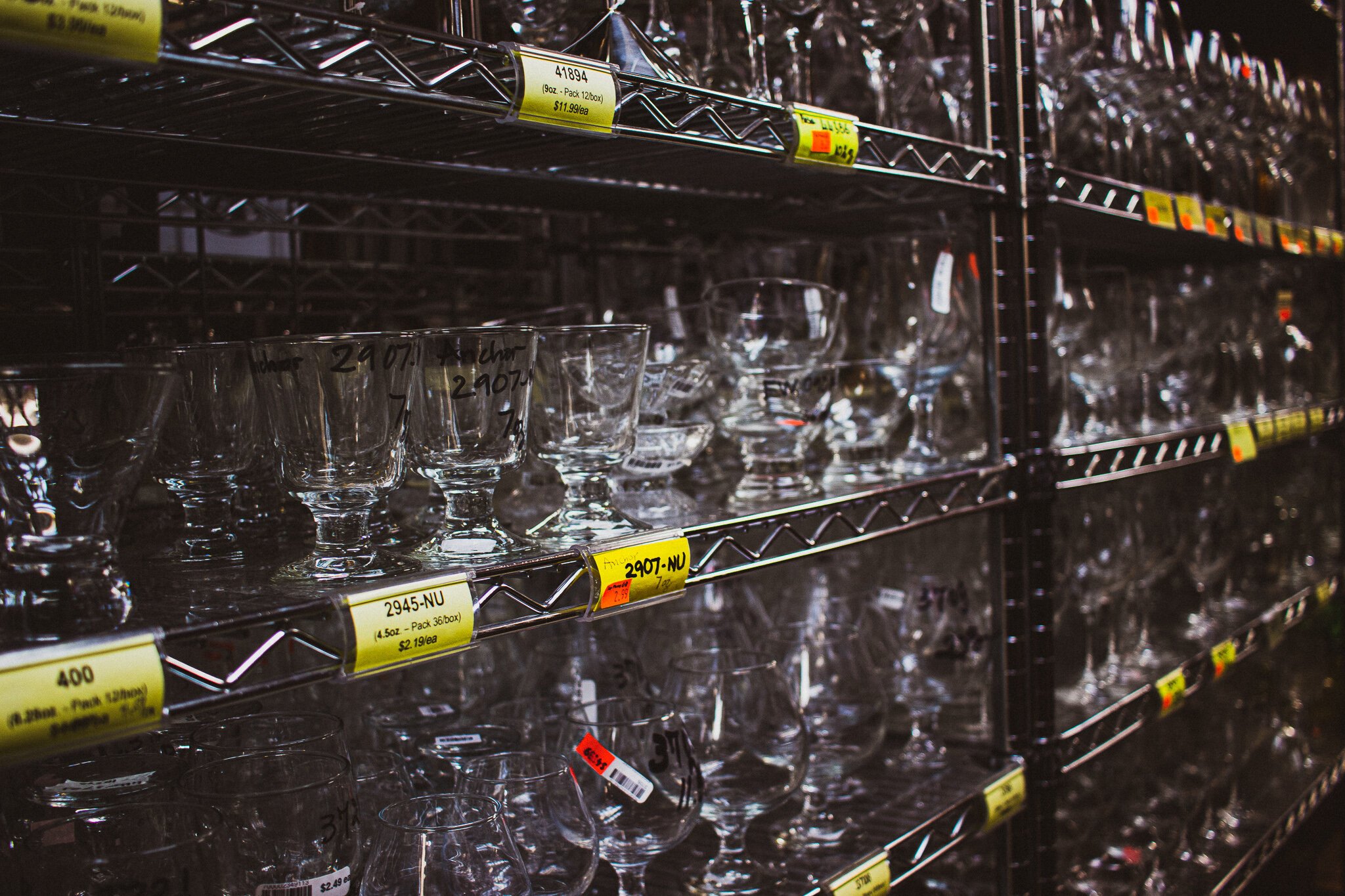Tap Phong, Part 1: The "Collection or the Best of Everything"
The Tran Family, L-R: Minh, John, Lili, Anna, De, Jessica, Danny, Kevin, Andrew.
Part 1 of a 2-part series.
It was a crisp 8℃ on a Monday afternoon as the Tran family patiently waited outside in front of Tap Phong. They were gathered for a rare occasion - a family photo.
This was take two. After our first take, we realized Danny was missing. Now that we had him, someone had to go find Andrew again, and Jessica had run in quickly to help a customer. Coming from a large family myself, there was something familiar and heartwarming about this moment, which I’d have the privilege of immortalizing. According to Lili Tran - part of the third generation to take on the mantle - the timing couldn’t be any more serendipitous; it’s not often that the whole working family is at the store on the same day, at the same time.
We were first introduced to Tap Phong years ago through Nick’s George Brown Culinary Arts class. We’ve been enamoured ever since, always finding some excuse to climb inside the rabbit hole, to get lost within their Wonderland of organized chaos. Whenever a friend is ready to ditch their parents’ hand-me-down cookware, or wants advice on the perfect chef’s knife, we never merely recommend Tap Phong, but insist that we accompany them to “show them the store.” And when we opened our food stall in 2016, the store was instrumental in outfitting us with every little thing we didn’t know we needed.
For over 30 years and across 3 generations, Tap Phong has remained an iconic institution in the food service industry, and a true pillar to their community. The Tran family’s journey is a shining example of the immigrant experience - one that is rooted in survival through grit, owing its humble rise to notoriety to no more than uncompromising work ethics and a genuine desire to help their customers. What is remarkable is how seamlessly they’ve retained their business - and family - values while constantly evolving with each new generation. Especially in this time of volatility, I wanted to know what was in the family’s secret sauce.
I found the perfect opportunity to ask one morning when picking up a few replacements for glasses we’d broken and a strainer whose metal wires started fighting back. As she was cashing me out, Lili exclaimed how just that morning, she had seen a video on how to clean make-up brushes using a strainer like the one I’d bought. She proceeded to explain it to me. Amused by this interaction, I finally mustered up the courage to introduce myself after all these years. Two weeks later, Lili accepted my invitation for coffee and shared her family’s extraordinary story.
“They were one of the boat people that came from Vietnam. I think they kind of just had this mentality, like they knew they were in for a fight.”
The first iteration of Tap Phong was opened in Vietnam by Lili’s grandparents and it was very different from the Tap Phong we know today. The family lived in the store, either in the back room or on the floor above. It was a general store that sold things of necessity; from textiles for making clothes, to kitchen utensils. Sadly, the family lost the store in the 1970’s - a casualty of the Vietnam War. Lili admits that the details of that time are unclear to her. Understandably, it’s a period that the family doesn’t often speak of.
Anna Tran, Lili’s mother.
In 1979, Lili’s grandparents, along with her parents Anna and John, and Aunt De and Uncle Danny immigrated to Canada. “My mom at the time, when she was on the boat from Vietnam and then in the refugee camps, and then finally in Canada, she was fully pregnant with me. So she had my brother who, let's see, Minh was probably three turning four, Tuan was probably two years old. So all these toddlers, and then she's fully pregnant with me on a boat with maybe 30-40 plus people. Yeah, for how long? I don't know. So I can't imagine how she survived.”
They first settled in Guelph, then gradually moved to Toronto. While her grandfather had found work as a Chinese grocery store manager in Chinatown, and her father as an electrician, the remaining family members worked many odd jobs, sometimes two or three at a time, to make ends meet - anything from seam-stressing to factory jobs assembling TV dinners.
In 1984, Lili’s grandfather was approached by shop owners looking to sell their business. At the time, the family depended on each other deeply - every bit of income was pooled together to ensure their collective welfare. To mitigate the risk, the family decided that Aunt De and Uncle Danny would start the business first, while the rest of the family would hold on to their existing jobs.
The original store sold ceramics and the owners left the remaining inventory to the Trans. “There was a whole dampened basement full of stock that was stuck with hay and mud. And it was literally getting to the nitty gritty of washing it off and just making everything presentable and selling it.” Over a decade and 14,000 km later, Tap Phong had been revived at 332 Spadina Avenue.
“Even if it didn't work, the thing is, you just keep going. And that's what sustained us - is their perseverance. When I say them I mean, literally, 20 plus years of my parents and aunt and uncle, and my grandparents just not stopping. No vacation. Hardly. Just working, working, working.”
A variety of bamboo steamers are still available at Tap Phong today.
In time, the remaining family members were incorporated into the business, while Lili’s grandmother looked after the kids. Lili has vivid memories of the old location, which is now an Ajisen Ramen. When her grandmother would go grocery shopping, she would leave the children at the small two-aisle store, where Lili would play with the tools in the hardware section in the back, or sit on the floor and draw on scraps of paper she’d find. She’d be given a dollar to buy fries and gravy at Switzer’s Deli, a memory that still fills her with nostalgia today, decades after the deli has closed down.
In 1989, Tap Phong moved to its current, much larger location at 360 Spadina Avenue, previously an old slaughterhouse. “I know that date because my aunt, coincidentally, was pregnant with her second child, my cousin Jessica, at the time. So you can imagine, they were setting up shop and I know my aunt, my mom, my dad, and my uncle had no help. And so they're there spending nights sleeping on boxes, pallets, spending night and day just to get the store ready.”
The store was an extension of the previous one. Initially, the cookware it carried was limited to the ethnic items one would expect of a Chinatown shop - woks, bamboo steamers, and plastic colanders. In time, Tap Phong’s slow and steady evolution into restaurant and kitchen supplies would be shaped by its community.
The Chinatown of the 80’s was populated by grocery stores, restaurants, cafés, and ceramic shops similar to the one the Trans had inherited. Lili informs me that, in fact, it wasn’t fully Chinatown - the area had a significant Jewish presence at the time as well. Meanwhile, neighbouring Kensington Market was then home to George Brown’s first campus. Guided by their patrons, which skewed towards local food service establishments and trade students, the family worked hard to meet demand. By listening intently to their customers’ needs and through constant trial and error, the Trans iterated and reiterated until they found and firmly established their unique identity.
“When they started this business, they wanted to have a stable income to provide their family with. And for myself, the fact that I just had a role to play. [...] Because for us, it's just our business, just business as usual. But that it is, I guess, endearing enough to a lot of people, that it's become like a travel spot in some travel blogs. That’s surprising.”
As the Trans imprinted themselves into the fabric of their community, their community grew beyond the boundaries of Chinatown and Kensington Market. Tap Phong’s reputation strengthened by word of mouth. Similar to how we found out about the store, George Brown’s culinary students were ushered to the unassuming landmark by their teachers - people who had shopped there since the time they were students themselves. Tap Phong now has a loyal base of Chinatown chefs who’d shopped there since opening day, as well as chefs from all over the city who first started shopping as their stars began to rise and never left.
“One of our early chef customers that I remember was Susur Lee. [...] From the early days, he was the one buying bowls, and I think he came from that community where he was a young chef, you know, thriving too. And there just buying stuff for his own home and making a name for himself.”
From novice cooks to celebrity chefs, all are created equal before the overflowing aisles of stainless steel pots, porcelain bowls, and takeaway containers as far as the eye can see. And that’s part of Tap Phong’s charm - how unassuming, unpretentious, and comfortable it is.
“It just looks like a regular store, so you're not intimidated. And then you're just immersed by so many things, and you can't believe it. And no one is trying to come up to you and sell things. You're just there to explore, and then figure things out. And if you have a question, we're glad to help [...] People who are just starting out, they can just come here. And then if they become these great successes, which I love to hear, then that's great. I'm just glad we're in some way, shape, or form part of their stories.”
Tap Phong has weathered many storms over the past three decades, riding the ebb and flow of time, with its feet firmly planted in their home - Chinatown. Where countless small businesses around them have come and gone over the years, Tap Phong remains a symbol of resilience that their community depends on. Especially during COVID, that Tap Phong continues to stand tall has never been more significant to them. “The people in our community say, ‘Oh, great, you're open still,’ or ‘I'm so glad to see that you're open.’ And then just sort of realize [...] that as much as some things are changing, I think people like having constants. It’s reassuring, comforting.”
Having found a couple of different English translations for Tap Phong, I asked Lili about the meaning behind the name. “They can't really give you the exact translation, but how I interpret it is loosely ‘the collection or the best of everything’.” It’s a fitting name. In many ways, Tap Phong does represent the best of everything. In the most literal sense, you’ll likely find it perusing the aisles - this, I assure you. But through the Tran family, Tap Phong also exemplifies the best of people and what they are capable of accomplishing together, despite the odds.
What the Trans have built is nothing short of exceptional, but I’m reminded that this is just one story among countless others like it. The journey is arduous and sometimes full of peril for immigrants like the Trans who came to Canada as refugees with little more to lose. But they come here with hope and a singular objective that I believe all immigrants share: to work as hard as they can, to create a better life for their family.
Life rewards resilience and Tap Phong is a beacon of hope to all who have the grit to make the climb, no matter how steep the road ahead.
Words and photos by Kimberley Kwo.

